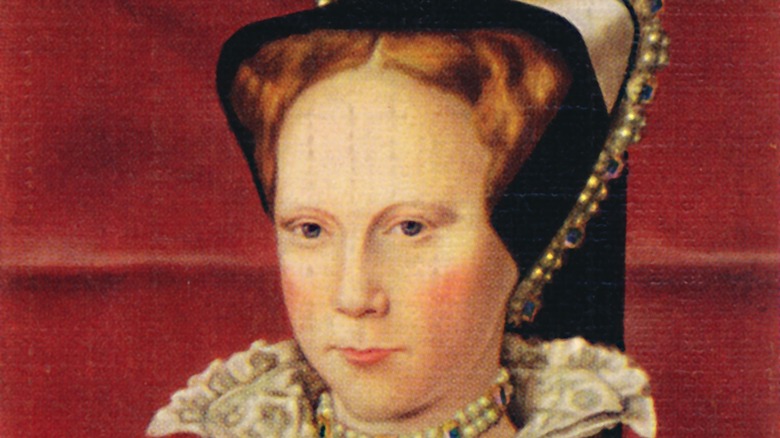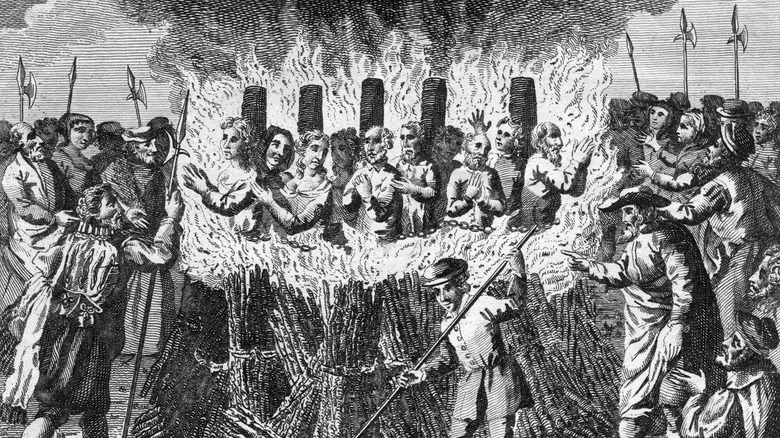The Dark Origins Of The Mary Mary Quite Contrary Nursery Rhyme
Many common nursery rhymes have in recent years have been tied to suspected, and often dark, historical origins. "Mary, Mary, Quite Contrary" is one example. One theory about the origin of the English rhyme is that it's a metaphor for Queen Mary I's torture and execution of Anglican Protestants, something that in 1744 (the poem's publication) the largely Protestant English public would have seen as barbaric. Her motivations originate with her father King Henry VIII, his break with the Catholic Church, and his creation of the Church of England (via Britannica).
This new branch of Christianity was largely only Protestant in the sense of splitting off from the Pope, more or less switching out papal authority with that of the English monarch. While Henry had in fact been a devout Catholic for much of his life, dissatisfaction with Pope Clement VII led him to establish an independent faith (via Patheos). With Henry's death came the reigns of his son Henry Edward VI, who died at the age of 15 after only six years on the throne, and niece Jane Grey, whom Edward picked as an heir for her subscription to his father's faith. Mary I, despite being Edward's half-sister, was raised as a staunch Catholic who refused to convert. Instead, barely a week after Grey's coronation, Mary took the throne for herself, and decided to use her authority to try and restore and preserve English Catholicism.
Mary I's murderous legacy is rooted in truth and hypocrisy
While Mary I exacted a campaign of vengeance that by modern standards would certainly be considered horrific, at the time, her reign was far from the bloodiest in recent history. In an effort to crush the rise of the Church of England, she had around 300 Protestants burned at the stake (via History). By contrast, her father had more than 57,000 people executed over even slight indications that they were traitors to England or the Crown. Mary's efforts received a mixed response from the populace, as Anglicanism was still fairly new and like her, many English were still Catholic (via Smithsonian Magazine).
Public opinion began to turn, however, once she made moves to marry Philip II of Spain. Her efforts to preserve Catholicism suddenly started to seem less like a grassroots effort and more like an attempt by Spain to dominate England, triggering a brief rebellion. After Mary's death she was replaced by her sister Elizabeth I, who was a Protestant. As Anglicanism became the dominant religion in England, Mary's actions came to be looked upon as a source of great evil, even as Elizabeth began to similarly execute Catholics (via HistoryHit).

